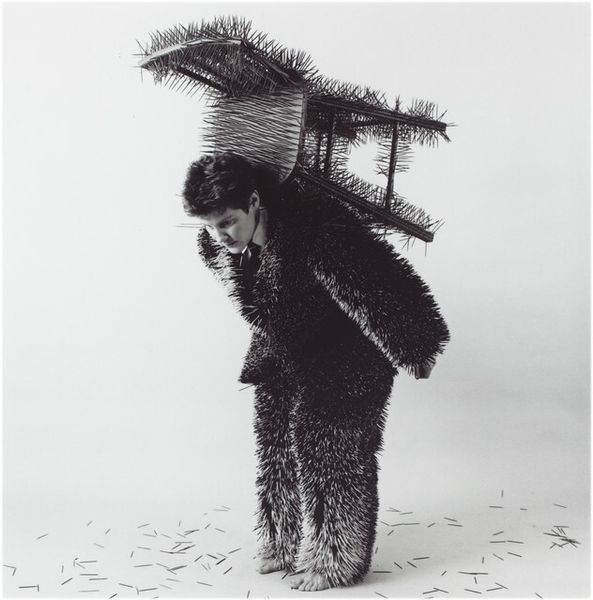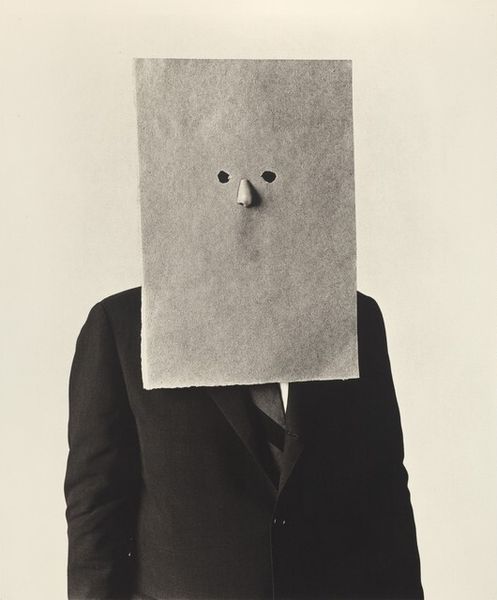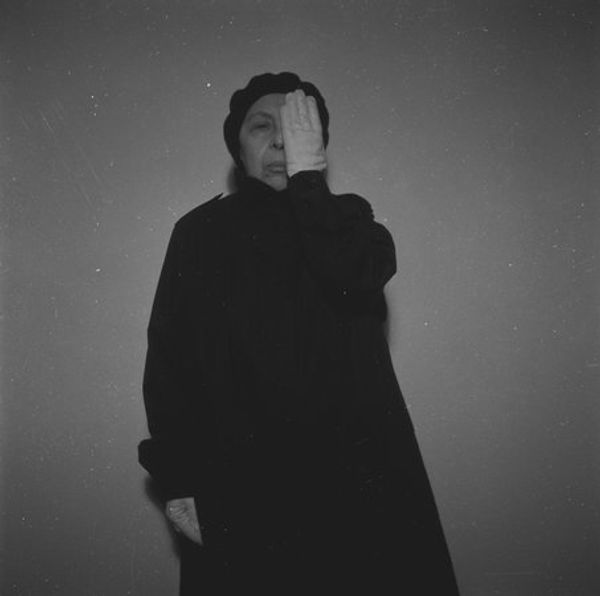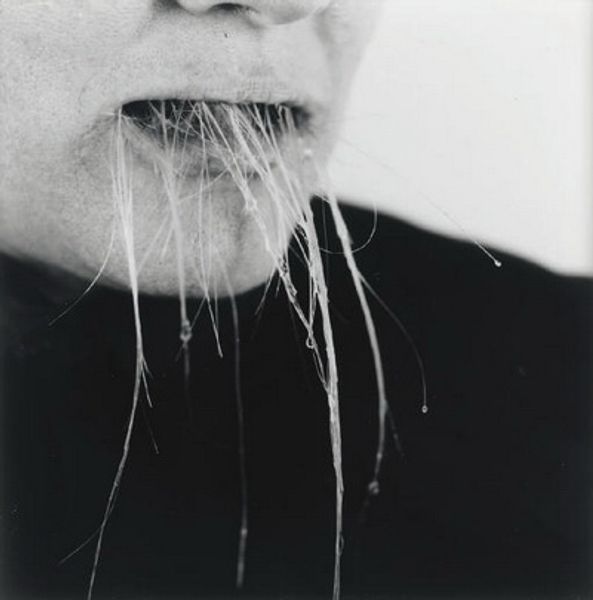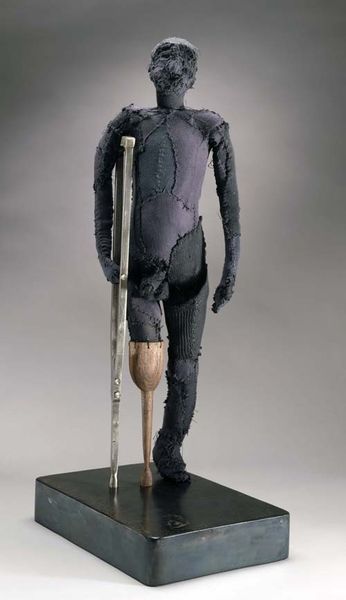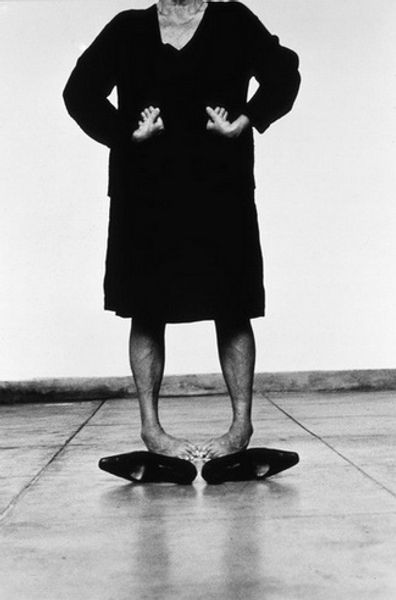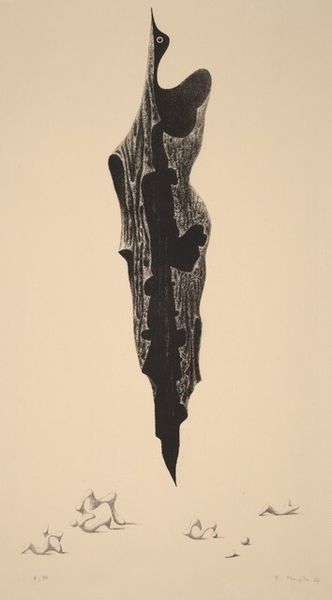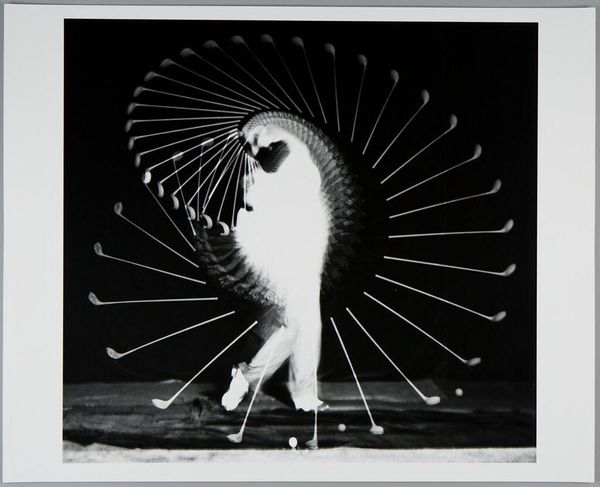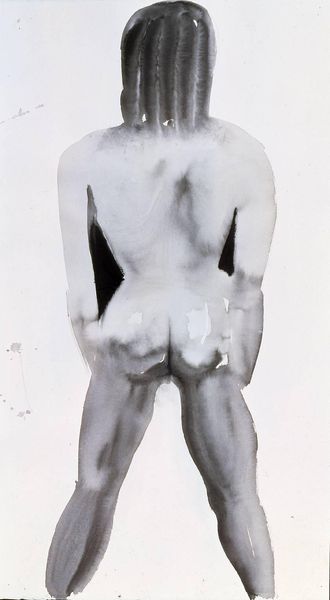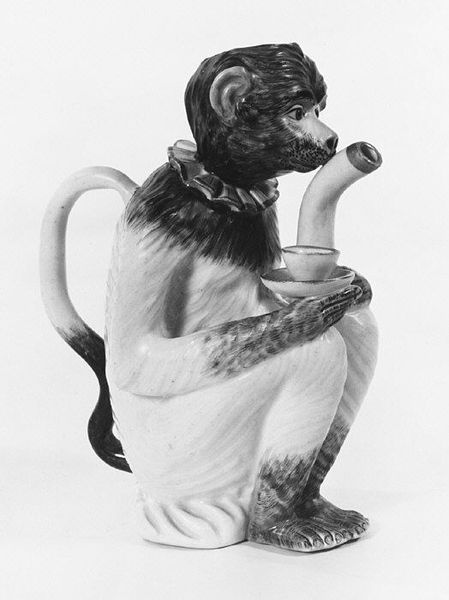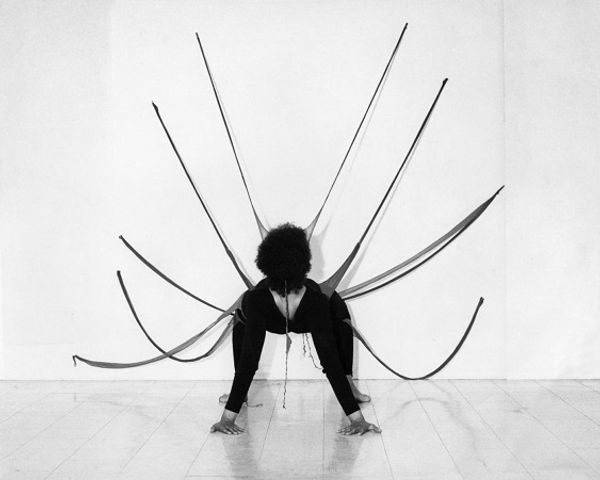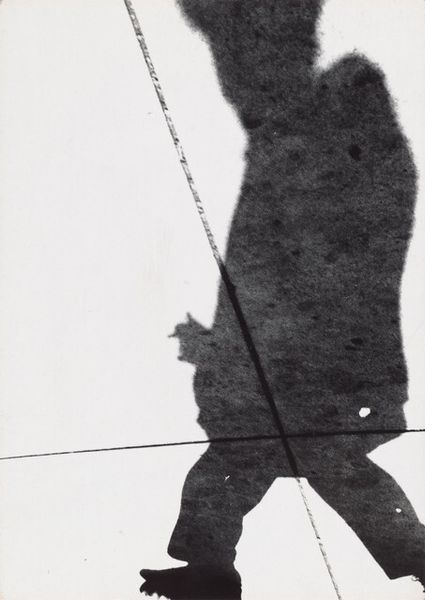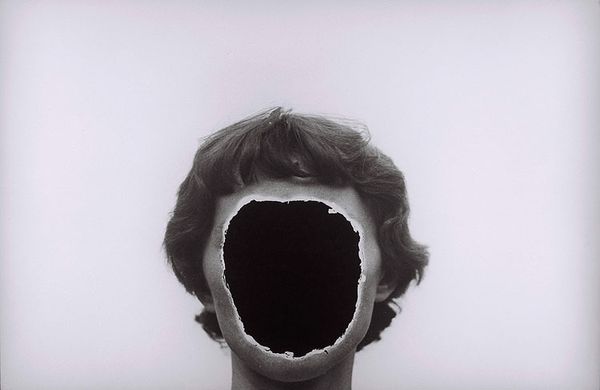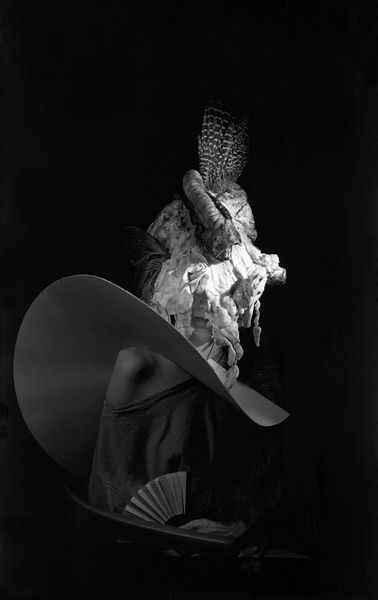
mixed-media, performance, assemblage, textile, sculpture
#
mixed-media
#
performance
#
conceptual-art
#
assemblage
#
textile
#
sculptural image
#
body-art
#
sculpture
#
abstraction
#
clothing design
Copyright: Ann Hamilton,Fair Use
Curator: Ann Hamilton’s "body object series #17 toothpick suit," created in 1984, stands before us—a mixed-media sculpture and performance piece. What's your initial response to this intriguing work? Editor: An immediate feeling of unease. It looks almost menacing, doesn't it? The texture of the “suit” is both inviting and repellent and that stark monochromatic palette just intensifies the feeling of tension. Curator: Hamilton's early "body object" series engaged with the physical self and its interactions within constructed environments. This piece is quite telling. It explores boundaries of protection and constraint using everyday materials like toothpicks. Editor: Exactly! Toothpicks—ordinary, disposable objects—transformed into instruments of potential pain, a walking barrier. It begs the question: who is this figure trying to protect themself from, and at what cost? This work feels like a commentary on social alienation and perhaps a fear of vulnerability, especially poignant within the context of the 1980s, amidst rising anxieties surrounding the AIDS epidemic. Curator: Indeed. Her background in textile art significantly influences the construction. The meticulous, repetitive process mirrors the repetitive, often isolating nature of labor and consumption. It also recalls ritualistic forms of dress from different cultures, questioning how identity is constructed and performed through adornment. The absence of the face is important, don't you think? Editor: Absolutely! By obscuring the face, Hamilton universalizes the experience. It becomes less about the individual and more about the human condition—the fragility and defensiveness we all carry. We don’t know the gender or ethnicity. It opens up dialogue about the very performance of self within increasingly hostile socio-political environments. Curator: The scale, roughly human-sized, reinforces that confrontation. I think the artist wants us to contemplate the role of the individual versus their place within larger structures, the burden of history and potential to resist it. Editor: Precisely, I leave considering the suit itself a political metaphor for resistance and conformity at the same time. Curator: I agree that Hamilton’s work makes us more attuned to those complex dialogues that resonate throughout art history and contemporary life.
Comments
No comments
Be the first to comment and join the conversation on the ultimate creative platform.
